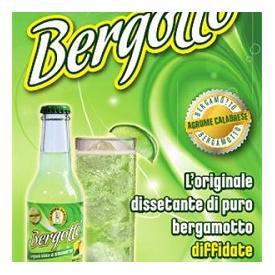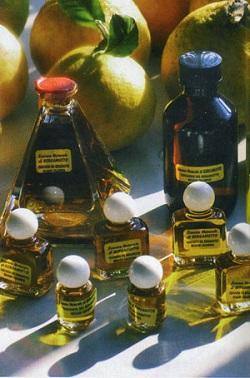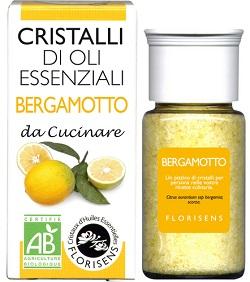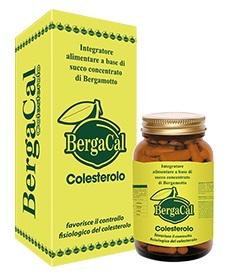|
 The Bergamotto di Reggio Calabria PDO is an essential oil extracted from three varieties of Citrus Bergamia Risso: Femminello, Castagnaro and Fantastico. The Bergamotto di Reggio Calabria PDO is an essential oil extracted from three varieties of Citrus Bergamia Risso: Femminello, Castagnaro and Fantastico.
Since the beginning of the last century, the market for bergamot essence has suffered from heavy speculative pressures due to fluctuations in both production and price which have caused cyclical crises in the sector, in their turn accentuated by self-interested defamatory campaigns conducted by the multinational industrial producers of synthetic essences.
 Beginning in 1930, various laws were enacted to regulate the bergamot sector and in 1946, following pressure from to promote and encourage adherence to a strict production protocol aimed at offering the market a genuine, high-quality essence product. Beginning in 1930, various laws were enacted to regulate the bergamot sector and in 1946, following pressure from to promote and encourage adherence to a strict production protocol aimed at offering the market a genuine, high-quality essence product.
The fruit is harvested at the beginning of November.
The orange blossom flowers are numerous, white and with an extraordinarily heady perfume.
 The fruit from which Bergamotto di Reggio Calabria PDO is extracted is similar to that of an orange, but with a green-yellow color, depending on the maturity. The fine and smooth peel is rich in essential oils and is characterized by the typical color which varies between green and yellow. The fruit from which Bergamotto di Reggio Calabria PDO is extracted is similar to that of an orange, but with a green-yellow color, depending on the maturity. The fine and smooth peel is rich in essential oils and is characterized by the typical color which varies between green and yellow.
 The plant is produced by grafting and today it is usually grafted onto a bitter orange, which gives strong, resistant, long-living plants. The plant is produced by grafting and today it is usually grafted onto a bitter orange, which gives strong, resistant, long-living plants.
The origins of the bergamot are still mysterious.
Different experts have traced it to China, Greece, Pergamo in Asia or the Spanish city of Berga, imported by Christopher Columbus on his way back from the Canary Islands.
Another fascinating hypothesis is that the bergamot originates from Turkey where a variety known as “pear of the lord” – in Turkish “Begarmudi” - exists.
 However, the most probable hypothesis is that the bergamot derives from the spontaneous mutation of another species (the bitter orange or lime) which took place in the city of the Fata Morgana towards the end of the seventeenth century due to the particularly mild micro-climate. However, the most probable hypothesis is that the bergamot derives from the spontaneous mutation of another species (the bitter orange or lime) which took place in the city of the Fata Morgana towards the end of the seventeenth century due to the particularly mild micro-climate.
The extraction of bergamot oil in Calabria started around the middle of the 17th century and for much of its history, it was carried out manually; the technique, known as the “sponge” method consisted in cutting the fruit in half, extracting the pulp and then pressing the peel against a natural sponge, using a turning action of the hand so as to squeeze the essence out of the pores.

200 kg of fruit are needed to obtain a liter of essential oil, extracted by pressing the skin of the fruit and absorbing it with natural sponges, collocated in special recipients.

The mixture of oil and peel liquid collected in the sponge was then squeezed out into a container known as a “concolina” and the essential oil was separated out be decantation.
In 1840 Nicola Barillà invented the first system of mechanical extraction of bergamot oil although it was somewhat clumsy and not automatic.
However, Barillà and Luigi Auteri perfected the system and in 1844 presented the first model of what would be called the “Calabrian Machine”.
The machine allowed for the extraction of high-quality essence with a much greater yield than the sponge technique had given.
This method was based on the rubbing of the surface of the fruit by two “cups”- one fixed and one rotating - fixed with metal points and blades which forced the essential oil out of the pores.

 The essential oil Bergamotto di Reggio Calabria PDO is indispensable in the perfume industry where it is utilized, not only for fixing the aromatic bouquet of the perfumes, but also to harmonies the other essences contained exalting the notes of freshness and fragrance. The essential oil Bergamotto di Reggio Calabria PDO is indispensable in the perfume industry where it is utilized, not only for fixing the aromatic bouquet of the perfumes, but also to harmonies the other essences contained exalting the notes of freshness and fragrance.
The essence is also used in the pharmaceutical industry for its antiseptic and anti bacterial properties, especially in dentistry and gynecology.
 In the food and sweet industry, it is used as an aroma for liquors, sweets and beverages. In the food and sweet industry, it is used as an aroma for liquors, sweets and beverages.
There are numerous uses of the essence also in the aromatic sector like pipe tobacco, candid and teas. Recently, the Bergamot essence has been used with great success in tanning products.

The product is sold as Bergamotto di Reggio Calabria PDO , under the form of an essential oil in small glass bottles.
Almost all products are sold transformed and utilized mainly in the food industry, in the perfume sector and in the pharmaceutical industry.
Thanks to the special characteristics of the Ionian-Mediterranean microclimate, it is possible to obtain the yield in essential oil. For this Calabria is the major world producer of Bergamot with 90% of the production, a minimal part is cultivated in Africa and South America.
|



















 The Bergamotto di Reggio Calabria PDO is an essential oil extracted from three varieties of Citrus Bergamia Risso: Femminello, Castagnaro and Fantastico.
The Bergamotto di Reggio Calabria PDO is an essential oil extracted from three varieties of Citrus Bergamia Risso: Femminello, Castagnaro and Fantastico. Beginning in 1930, various laws were enacted to regulate the bergamot sector and in 1946, following pressure from to promote and encourage adherence to a strict production protocol aimed at offering the market a genuine, high-quality essence product.
Beginning in 1930, various laws were enacted to regulate the bergamot sector and in 1946, following pressure from to promote and encourage adherence to a strict production protocol aimed at offering the market a genuine, high-quality essence product.  The fruit from which Bergamotto di Reggio Calabria PDO is extracted is similar to that of an orange, but with a green-yellow color, depending on the maturity.
The fruit from which Bergamotto di Reggio Calabria PDO is extracted is similar to that of an orange, but with a green-yellow color, depending on the maturity. 
 However, the most probable hypothesis is that the bergamot derives from the spontaneous mutation of another species (the bitter orange or lime) which took place in the city of the Fata Morgana towards the end of the seventeenth century due to the particularly mild micro-climate.
However, the most probable hypothesis is that the bergamot derives from the spontaneous mutation of another species (the bitter orange or lime) which took place in the city of the Fata Morgana towards the end of the seventeenth century due to the particularly mild micro-climate.


 The essential oil Bergamotto di Reggio Calabria PDO is indispensable in the perfume industry where it is utilized, not only for fixing the aromatic bouquet of the perfumes, but also to harmonies the other essences contained exalting the notes of freshness and fragrance.
The essential oil Bergamotto di Reggio Calabria PDO is indispensable in the perfume industry where it is utilized, not only for fixing the aromatic bouquet of the perfumes, but also to harmonies the other essences contained exalting the notes of freshness and fragrance. In the food and sweet industry, it is used as an aroma for liquors, sweets and beverages.
In the food and sweet industry, it is used as an aroma for liquors, sweets and beverages.













 In his study he also quoted the experiences of another Reggio doctor, Vincenzo De Domenico (1854) who carried out observation experimentation on himself, taking increasing 15 drop doses.
In his study he also quoted the experiences of another Reggio doctor, Vincenzo De Domenico (1854) who carried out observation experimentation on himself, taking increasing 15 drop doses. 



